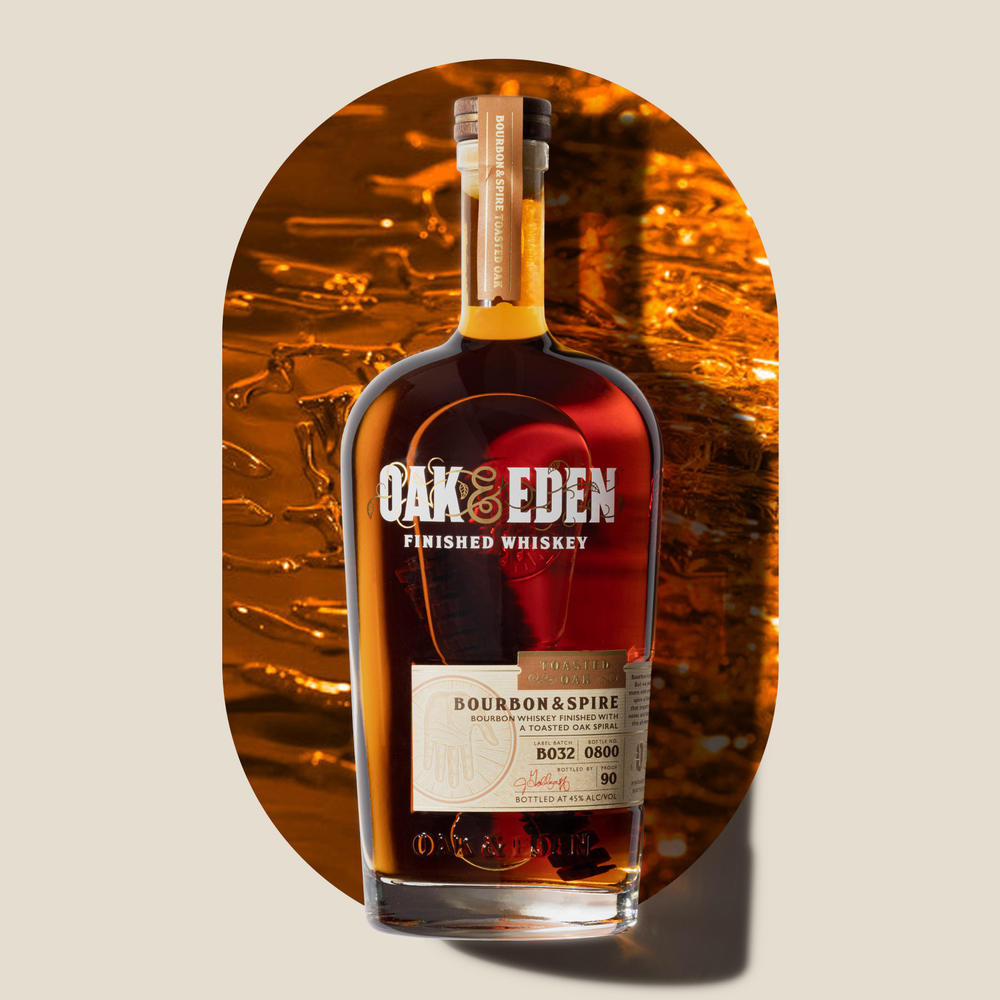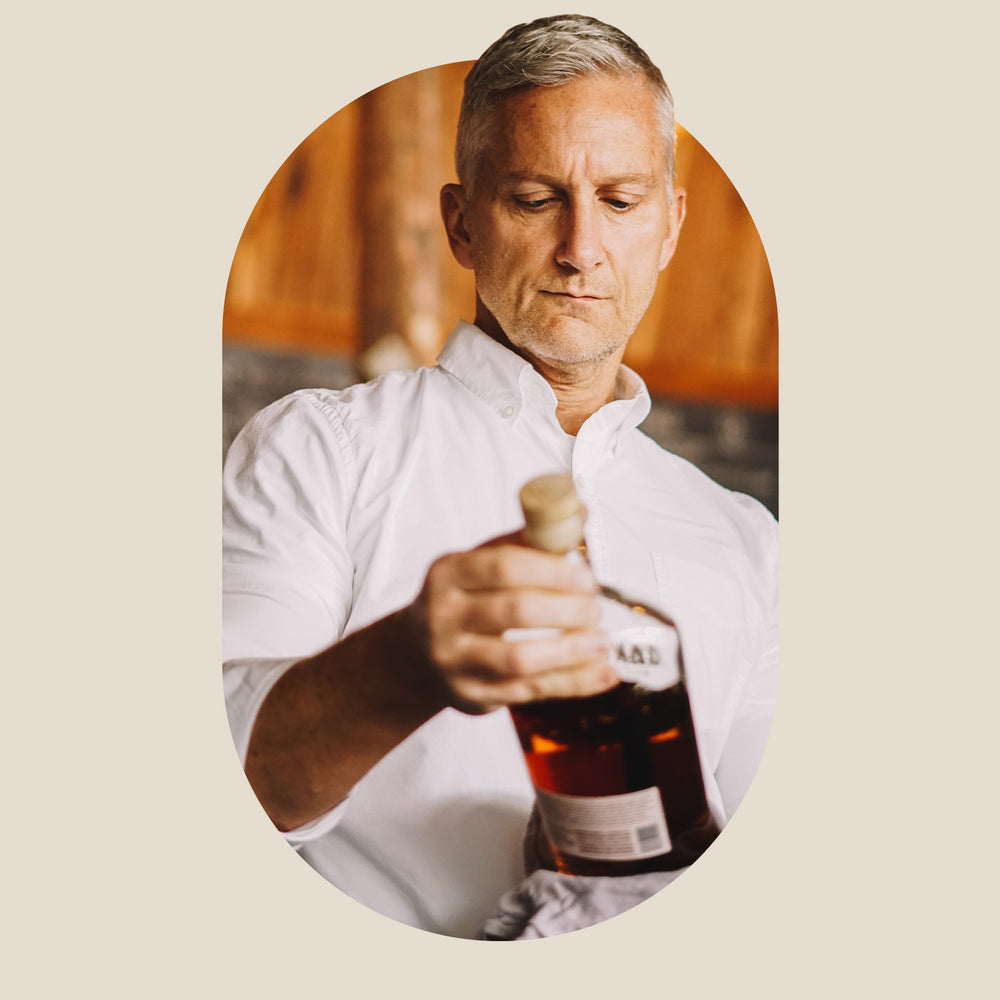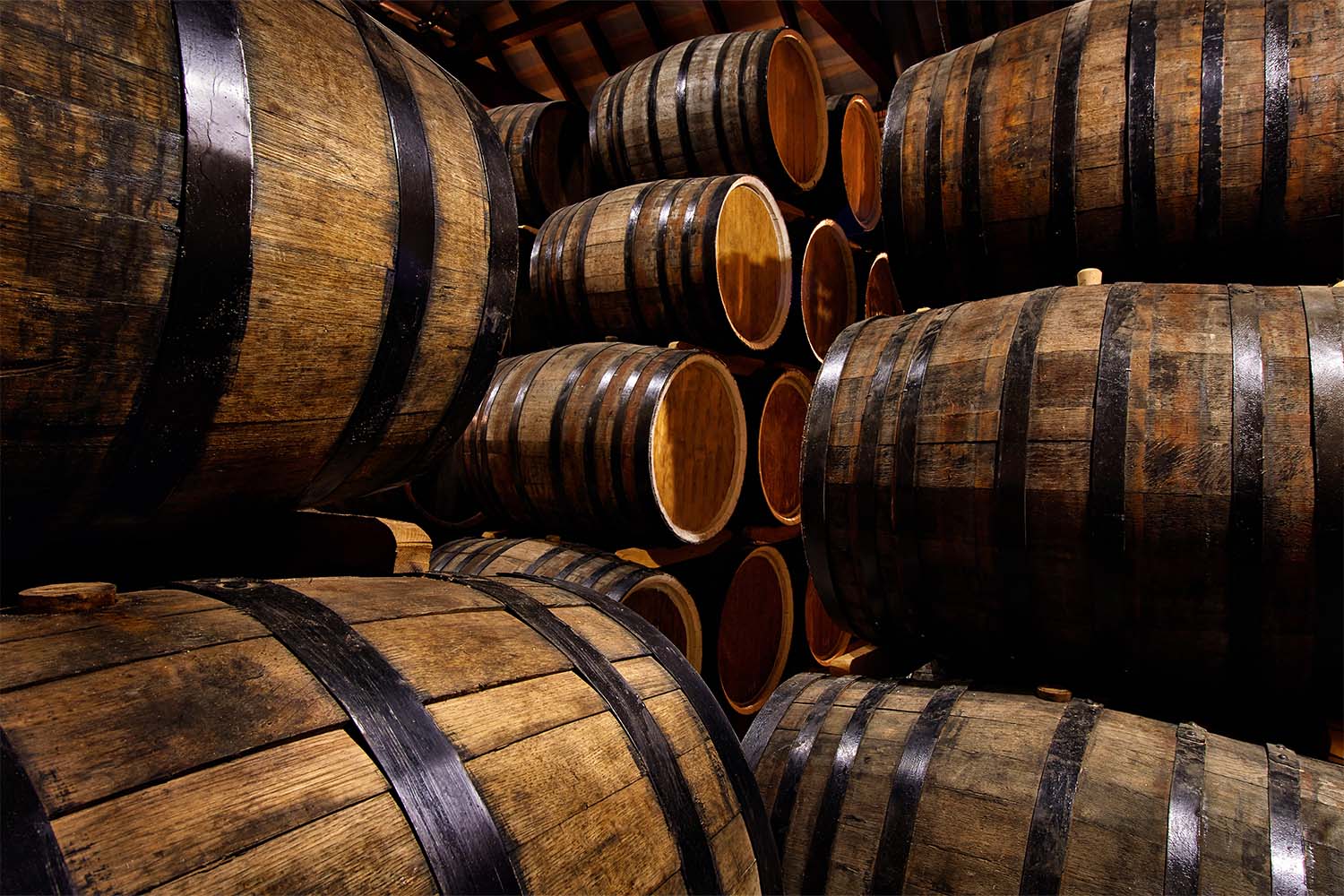Oak is the key to aging bourbon.
Oak barrels are essential to the bourbon aging process because they impart flavor and color to the spirit as it matures. The type of oak, how long the barrel is charred, and where the barrel is stored all play a role in the final flavor.
A bourbon barrel is charred to create a surface that will interact with the spirit and help impart those flavors we all know and love. There are different types of oak, each lending its own nuance to the process. Let's take a closer look at what goes into making a bourbon barrel and how it affects the taste of one of America's most popular spirits.
What Is Bourbon?
Bourbon is a type of American whiskey that is made from corn and other grains.
Bourbon's main ingredient is corn, and the mash bill must be at least 51% corn to be a true bourbon. Other grains that can be used to make bourbon include rye, wheat, and barley.
Bourbon must be aged in new oak barrels for at least two years. The barrels must be made of American oak that has been charred on the inside. These barrels give bourbon its characteristic amber color and unique flavor.
Bourbon must also be bottled at 40% ABV, or alcohol by volume, in order to be considered authentic. You can find many "cask strength" whiskies available that feature ABV of up to 60% or more. We offer some higher-proof bourbons and whiskies in our Collaborations Series.
What Do Barrels Do for Bourbon?
Beyond serving as a vessel to hold the whiskey while it ages for a minimum of two years, the bourbon barrel serves another important purpose. When the whiskey enters the barrel it is clear, and when it is ready for the bottle, it is a deep, rich amber color, full of flavor and depth.
All of the color and a majority of the flavor in any bottle of whiskey comes from the barrel, with the rest coming from the grains in the mash bill.
So, what does the barrel do for your bourbon? It takes a nearly neutral grain alcohol and turns it into delicious, caramel-colored whiskey.
How Are Bourbon Barrels Made?
The bourbon barrels that any distillery uses have to be brand new barrels, meaning they all start out at the cooperage. At the cooperage, they receive shipments of American Oak. All bourbon must be aged in American oak, which has been cut into staves — the technical term for the planks of wood that make up each barrel.
The barrel heads are then made, and the staves are put together and held in place with metal hoops. This is done so so that the barrels are completely liquid-tight, but not so that they are completely air-tight. That extra airflow is what allows for the flavor to get in.
Next, the barrel is filled with water to soak for several days. After the barrel has soaked, it’s time to char the inside.
Charring is done by setting the barrel on fire and letting it burn for about 30 minutes. Every whiskey and bourbon barrel has to be charred, but the level of char is left up to each distiller. Charring can be a major difference-maker for the flavors of different distilleries' whiskies.
Once the barrel has cooled, it is then filled with bourbon and sealed. The barrel will sit for at least two years and usually for longer — up to decades. During this time, the bourbon will take on the flavors of the wood, creating a unique and delicious taste.
How Does Barrel Aging Work?
When you put a whiskey or bourbon into a barrel, the barrel is liquid-tight but not airtight. This means that the barrel is susceptible to temperature and humidity changes.
Wood is porous, meaning that it has pores that liquid can fill. This is why wood stays wet longer than a metal pole. As the temperature changes through the seasons, the wood that makes up the barrels expands and contracts, affecting the wood's porousness.
This expanding and contracting of the wood pulls in and pushes out the whiskey, and along with the whiskey, botanicals, flavor notes, and coloring agents leave the charred wood and enter the whiskey.
These additions mellow out the harsh flavors of the liquor and impart the rich color and deep vanilla, oak, and caramel flavors that bourbon whiskey is known for.
What Types of Wood Are Used for Whiskey Barrels?
While bourbon has to be made in new, charred American oak barrels, not all types of whiskey are limited in this way.
Across the globe, whiskies are made using all sorts of different kinds of wood, and we even make several whiskies here at Oak & Eden that utilize woods other than American oak for finishing.
The most common types of wood used in whiskey barrels are:
American Oak
American Oak barrels give whiskey a rich, deep flavor with notes of vanilla and caramel. American Oak is the most common type of wood used for bourbon whiskey, as well as other types of whiskey, such as rye.
Rye whiskey tends to have a spicier flavor profile, and the American Oak helps to mellow out those flavors and add depth to the drink.
French Oak
French Oak barrels tend to impart a fruitier flavor to whiskey, with notes of citrus and stone fruits.
French Oak is less common than American Oak in the world of whiskey, but it is sometimes used for a higher-end, premium whiskey. French Oak is more common in the world of Scotch whisky, where it is used to give the drink a more complex flavor.
Japanese Oak
Japanese Oak barrels are a newer addition to the world of whiskey, and as such, not much is known about them yet.
Japanese Oak imparts a very unique flavor to whiskey, with notes of green tea and bamboo. This Oak is very rare, and it is only used for special releases and limited editions.
Sherry Oak
Sherry Oak barrels are most commonly used in the world of Scotch whisky, where they impart a rich, fruity flavor to the drink. Sherry Oak barrels are made from Spanish Oak that has been seasoned with sherry.
Chestnut
Chestnut barrels are not as common as other types of wood barrels, but they can give a whiskey a unique flavor.
Chestnut barrels tend to impart a nutty flavor to the whiskey, with notes of hazelnut and almond. Chestnut is also a very hard wood, so these barrels can last longer than other types.
Chestnut barrels are most commonly used for premium and limited edition whiskeys.
Barrels Mean a Lot to Us
Here at Oak & Eden, we love the wood that we use for our whiskey because our whiskey is built on wood. Every bottle of Oak & Eden whiskey gets one of our expertly-crafted wooden spires.
These spires are made from different kinds of wood, toasted and charred to match each blend of whiskey we offer. The spires help achieve our in-bottle finishing approach to whiskey, which lets us continue to add depth and flavor to our whiskey after bottling.
We’re committed to using only the highest quality oak barrel available on the market today. We utilize both American and French oak from the best suppliers in the world to make wooden spires for our in-bottle finishing technique.
The result? Whiskey that you have to try to believe.
Why Does Bourbon Have To Be Aged for So Long?
Bourbon has to be aged for at least two years, but most bourbons are aged for four years or longer. The aging process is what gives bourbon its distinct flavor and color. The longer a bourbon is aged, the more mellow and smooth it will become.
Bourbon has to be aged for a long time because of the reactions and processes that happen over time. These reactions can’t really start until about eight months of aging have occurred.
In general, whiskey that is aged longer is more expensive — it’s going to taste better since it has had longer to age.
At the end of the day, the speed of the aging process is actually relative; the more flavor you can pull from the barrel to the whiskey in less time, the faster you can age a whiskey. However, speeding up the process has proved difficult for distillers.
The speed of the aging process is determined by the volume of liquid and the surface area of the wood. That means a smaller barrel will age whiskey faster. Of course, that requires more wood for smaller barrels, which eventually cancels out the effectiveness of this technique.
Bourbon Aging Barrel: Takeaways
The barrel that your bourbon is aged in is a major player in the flavor components that get into your whiskey.
Bourbon barrels must be made of American Oak, but other styles of whiskey can use barrels made with one of several types of wood, including American, French, Japanese, or Sherry Oak. The type of Oak used will impart different flavors to the whiskey.
Bourbon must be aged for at least two years, but most are aged for longer. The aging process is what gives bourbon its distinct flavor and color.
While aging bourbon in smaller barrels can be a way to get high-quality flavor faster, this technique is a bit of a paradox. It ages the bourbon faster, but it also gives distillers less capacity in each barrel. Ultimately, it’s up to the distiller to decide how big their barrels will be.
At Oak & Eden, we use carefully aged whiskey in our blends before using our secret element - wooden spires for in-bottle finishing. These wooden spires help unlock additional depth of flavor in all of our whiskies, and each one has its own distinct taste and aroma.
Sources:
What's the Difference Between Bourbon and Whiskey? | Food & Wine






